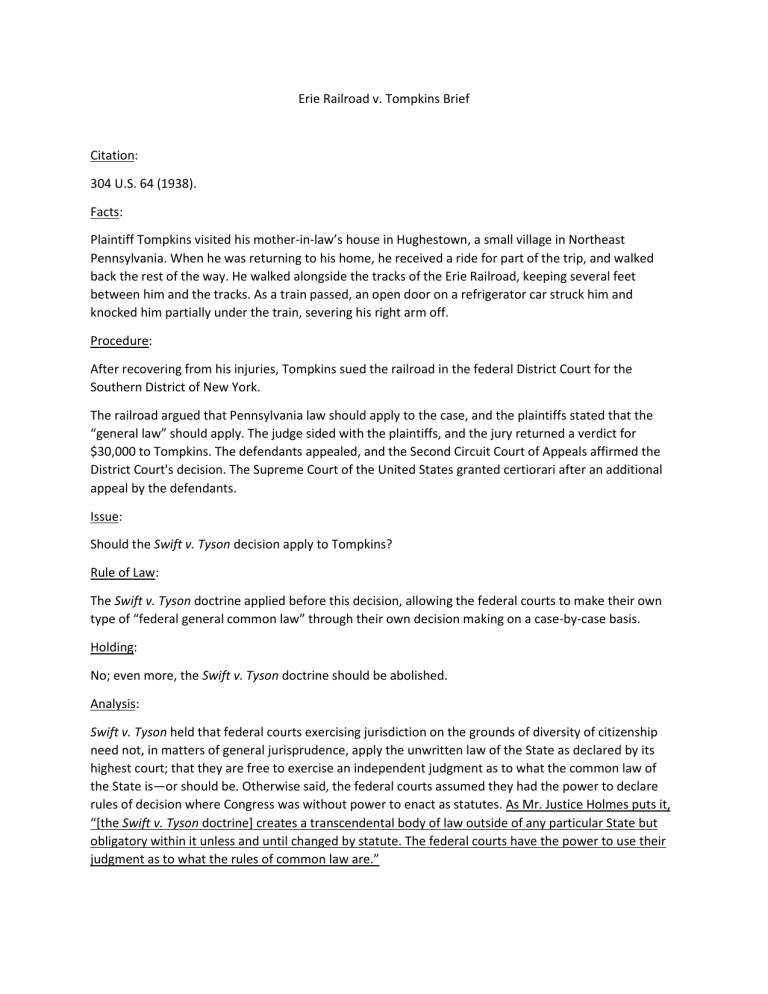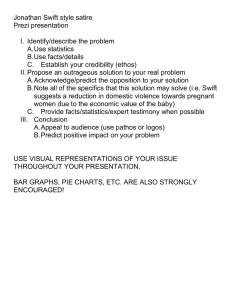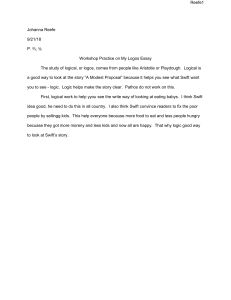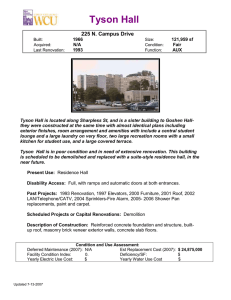
Erie Railroad v. Tompkins Brief Citation: 304 U.S. 64 (1938). Facts: Plaintiff Tompkins visited his mother-in-law’s house in Hughestown, a small village in Northeast Pennsylvania. When he was returning to his home, he received a ride for part of the trip, and walked back the rest of the way. He walked alongside the tracks of the Erie Railroad, keeping several feet between him and the tracks. As a train passed, an open door on a refrigerator car struck him and knocked him partially under the train, severing his right arm off. Procedure: After recovering from his injuries, Tompkins sued the railroad in the federal District Court for the Southern District of New York. The railroad argued that Pennsylvania law should apply to the case, and the plaintiffs stated that the “general law” should apply. The judge sided with the plaintiffs, and the jury returned a verdict for $30,000 to Tompkins. The defendants appealed, and the Second Circuit Court of Appeals affirmed the District Court's decision. The Supreme Court of the United States granted certiorari after an additional appeal by the defendants. Issue: Should the Swift v. Tyson decision apply to Tompkins? Rule of Law: The Swift v. Tyson doctrine applied before this decision, allowing the federal courts to make their own type of “federal general common law” through their own decision making on a case-by-case basis. Holding: No; even more, the Swift v. Tyson doctrine should be abolished. Analysis: Swift v. Tyson held that federal courts exercising jurisdiction on the grounds of diversity of citizenship need not, in matters of general jurisprudence, apply the unwritten law of the State as declared by its highest court; that they are free to exercise an independent judgment as to what the common law of the State is—or should be. Otherwise said, the federal courts assumed they had the power to declare rules of decision where Congress was without power to enact as statutes. As Mr. Justice Holmes puts it, “[the Swift v. Tyson doctrine] creates a transcendental body of law outside of any particular State but obligatory within it unless and until changed by statute. The federal courts have the power to use their judgment as to what the rules of common law are.” The Supreme Court stated that the Swift v. Tyson doctrine was bad for multiple reasons. 1. The application of the Swift v. Tyson doctrine, was, at the time, already extending it’s original purpose. (statutory construction) 2. All the benefits that the Swift v. Tyson doctrine intended to create weren’t there; rather, it was creating the exact opposite result! (desired benefits / mischievous results) a. It prevented uniformity b. It created uncertainties with the law c. It introduced discrimination by non-citizens against citizen 3. It created it’s own types of transcendental law outside of the State. That is, it created a federal general common law (which never existed before) This is unconstitutional! (unconstitutional) Because of these notions, the Supreme Court abandoned the Swift v. Tyson doctrine, and determined what law applies in federal court. The Supreme Court states, “Except in matters governed by the Federal Constitution or by Acts of Congress, the law to be applied in any case is the law of the State. And whether the law of the State shall be declared by its Legislature in a statute or by its highest court in a decision is not a matter of federal concern. Disposition: Reversed. Notes about Erie v. Tompkins: Important to note 1652: The laws of the several states, except where the Constitution or treaties of the United States or Acts of Congress otherwise require or provide, shall be regarded as rules of decision in civil actions in the courts of the United States, in cases where they apply. Remember, Choice of Law in Diversity Claims are the main target of the Erie Doctrine. If Pennsylvania had enacted a statute indicating that Tompkins was a trespasser and that RR liable only if grossly negligent, then Tompkins would’ve been screwed with or without the Swift v. Tyson doctrine. The court was NOT declaring that the Rules of Decision Act was unconstitutional; they were saying that Swift v. Tyson interpretation was unconstitutional.


